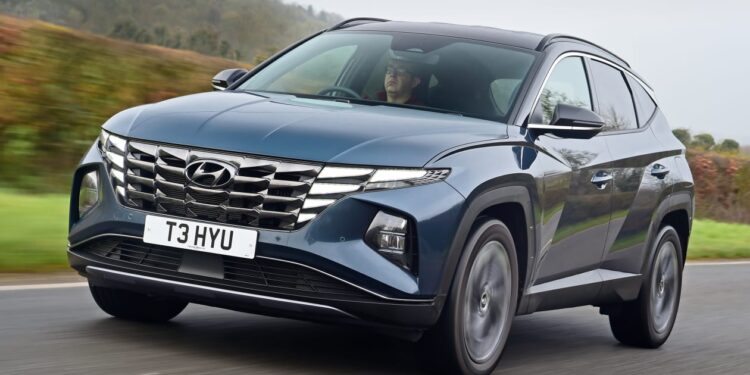Hyundai has decided that now is the right time to move the Tucson into serious premium territory. Is it a good call by the Korean manufacturer? Well, with a much improved interior, striking looks and plenty of useful on-board tech, it’s clear that the Tucson means business.
Efficiency-boosting hybrid powertrains are to be found throughout the range, while levels of standard equipment are high. Yes, you’ll find the Tucson a little more expensive to buy, but we think it offers sufficient quality to justify its positioning, and we’ve made it our 2022 Mid-size SUV of the Year.
About the Hyundai Tucson
Let’s cut straight to the chase – the previous Tucson model was a car that primarily sold itself on practicality, modest pricing and family usability, while decent levels of kit went some way towards making up for its distinct lack of flair.
Hyundai’s fourth-generation mid-size SUV is a slightly different proposition, keen to establish itself as a premium offering for families that value style and refinement, as well as the more prosaic qualities of overall load space and day-to-day functionality.
Competition is fierce in this market sector and many of the Tucson’s rivals have established USPs that help them stand out from the pack. The Volkswagen Tiguan has an unmistakable air of quality and a solid reputation, while the Ford Kuga is highly rated and brings a sense of driving fun to family SUV life. The Skoda Karoq and SEAT Ateca offer different blends of the tried and trusted Volkswagen Group formula, with Peugeot’s 3008 delivering a classy cabin and typical Gallic charm.
More reviews
Car group tests
Long-term tests
Road tests
Also worth a mention in the myriad choices are the Japanese trio of the Mazda CX-5, Toyota RAV4 and Honda CR-V, followed by yet further options in the form of the evergreen Nissan Qashqai, Kia Sportage, Renault Kadjar and Vauxhall Grandland.
That’s all just for starters, as the Tucson also has designs on buyers looking at the premium end of the market. It would appear to be in with a chance too, as when we pitched the Tucson against the more luxurious Lexus NX in a head-to-head test, the Korean SUV walked away with the crown. So, be in no doubt that Hyundai has a clear focus for not only taking on the best of the mainstream, but also nipping at the heels of the more upmarket brands like Audi and BMW.
With prices starting from around £29,000, buying into the Tucson range is more expensive when compared to the Tiguan and Kuga, although Hyundai doesn’t really offer a typical entry-level trim, so you’ll be well catered for in terms of equipment even with the ‘base’ car.
The range lineup is pretty straightforward, starting with SE Connect, N Line and N Line S, then Premium and top-of-the range Ultimate specifications. Standard kit includes dual-zone air-con, cruise control, a rear camera, a 10.25-inch infotainment touchscreen with sat-nav and Android Auto and Apple CarPlay connectivity.
The N Line models feature sporty tweaks both outside and inside, and is Hyundai’s riposte to cars like the VW Tiguan R-Line. You get 19-inch alloys, more aggressive bumpers and twin tailpipes, as well as tailgate spoiler and sports seats. Top-spec cars feature luxuries such as adaptive cruise control, an electric tailgate, a panoramic glass sunroof, heated and ventilated front seats and wireless mobile phone charging.
Power options centre around a 1.6-litre turbocharged petrol engine in various states of tune and with varying degrees of hybrid assistance. You can have a 148bhp petrol-only model with a regular six-speed manual gearbox, or trade-up to a slightly more efficient version with 48-volt mild-hybrid tech and either 148bhp or 178bhp.
A full-hybrid model is also available, using a 1.49kWh battery and a 59bhp electric motor that works with the petrol engine to produce a 227bhp total output. The engine options are rounded off with a 261bhp four-wheel-drive plug-in hybrid version.
The full- and plug-in hybrid cars are available with a six-speed auto transmission, while the 148bhp and 178bhp mild-hybrid variants employ a seven-speed dual-clutch auto. The lower-powered version is also available with Hyundai’s six-speed Intelligent Manual Transmission (IMT) which uses clever electronics to assist with changing gear, rather than operating a conventional clutch pedal.
For an alternative review of the Hyundai Tucson, visit our sister site carbuyer.co.uk…


